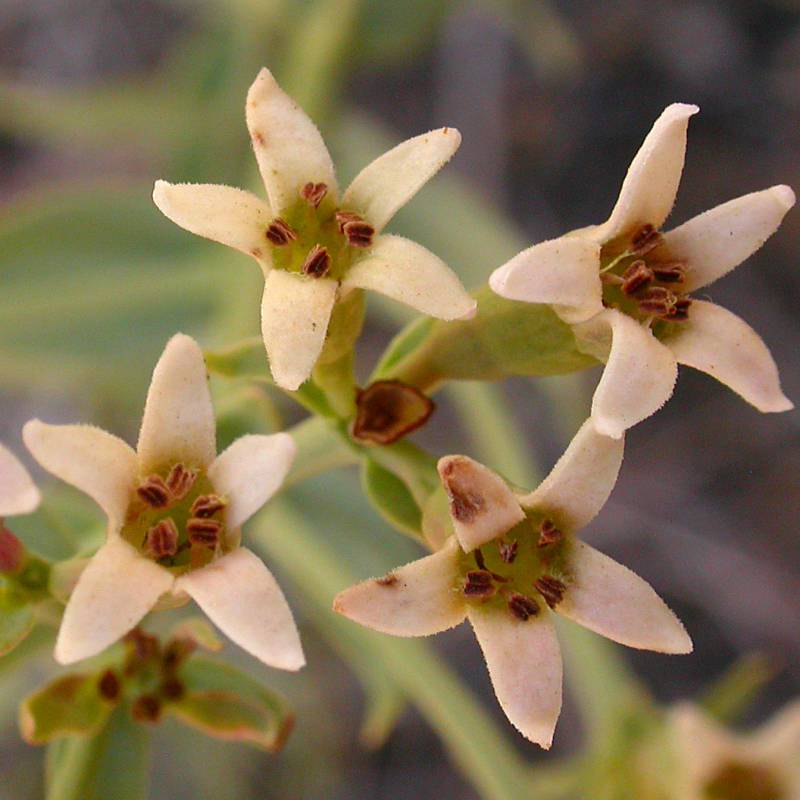Comandra umbellata
Comandra umbellata ssp. pallida
bastard toad flax
Leaves alternate, entire, short-petiolate, linear-elliptic to lanceolate or oblong, 5-40 mm. long and 1-10 mm. broad, from thin, green on both surfaces to glaucous, thick and fleshy.
Flowers perfect, 3-7 mm. long, numerous in clusters of terminal and sub-terminal, small cymes;
ovary inferior, surmounted by a disk surrounded by 5 white to purplish, broadly lanceolate, erect to spreading calyx lobes;
stamens 5, opposite the calyx lobes, the filaments 1 mm. long, with a tuft of hairs at the base.
Drupe dry to fleshy, purplish to brown, 4-8 mm. long, bearing the persistent calyx.
Comandra umbellata
Comandra umbellata ssp. pallida
Occurring chiefly east of the Cascades crest in Washington; Yukon Territory to California, east across North America to the Atlantic Coast.
Occurring east of the Cascades crest in Washington; British Columbia to Oregon, east to Idaho and Montana.
- Local floras:
BC,
OR,
WA
- Local Web sites:
Flora NW,
PNW Herbaria
WildflowerSearch
iNaturalist (observations)
USDA Plants Database
- LBJ Wildflower Center
- SEINet
- Plants of the World Online
- Encyclopedia of Life
- Wikipedia
- Google Image Search



